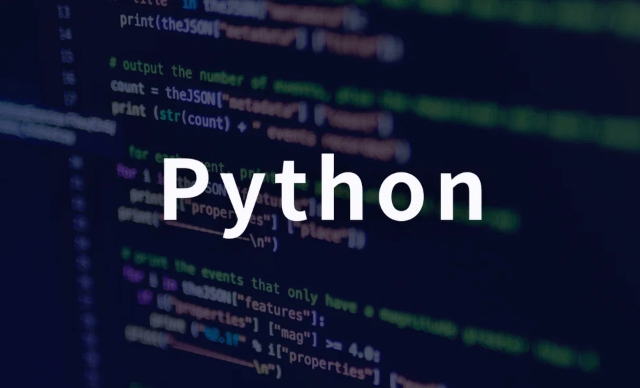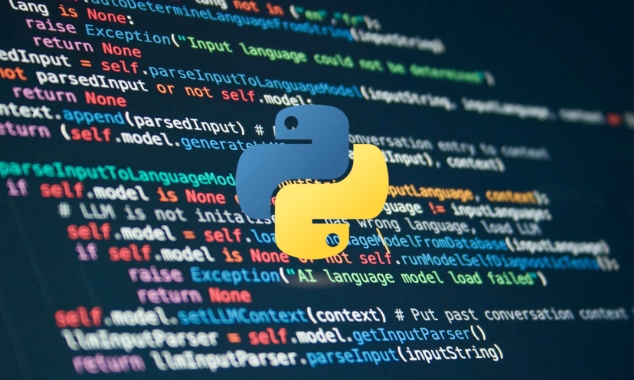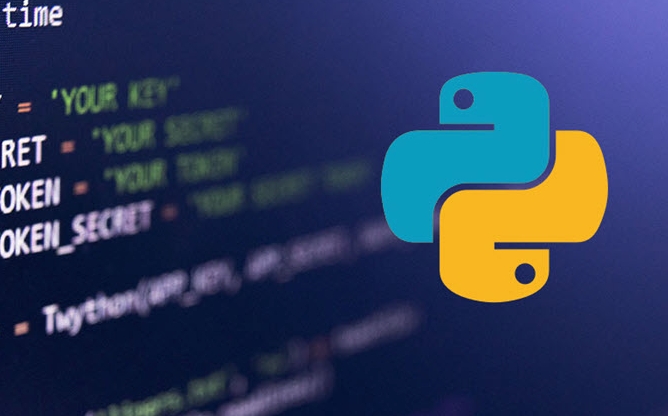To use the Twitter API with Python, first set up a developer account and app to obtain credentials, then install Tweepy for simplified interaction. 1) Create a Twitter Developer account and app to get API keys and tokens. 2) Install Tweepy via pip and authenticate using OAuth1UserHandler with your credentials. 3) Fetch tweets using methods like home_timeline() or search_recent_tweets() with filters. 4) Post tweets using update_status(), while respecting rate limits and policies. This setup enables powerful interactions with Twitter for data fetching, analysis, or automation.

Using the Twitter API with Python can feel a bit intimidating at first, but once you get the basics down, it becomes a powerful tool for fetching tweets, posting updates, or analyzing social media trends.

Step 1: Set Up a Twitter Developer Account and App
Before you can use the Twitter API, you need access. That means signing up for a Twitter Developer account and creating an app to get your credentials.
- Go to developer.twitter.com
- Apply for a developer account if you don’t already have one
- Once approved, create a new app — give it a name and description (doesn't have to be fancy)
- Under the "Keys and tokens" tab, you’ll find:
- API Key
- API Key Secret
- Access Token
- Access Token Secret
These four values are what you'll use to authenticate your Python scripts with the Twitter API.

Install a Python Library That Works with Twitter
You could make raw HTTP requests using requests, but that’s not very efficient. Instead, most people use a library like Tweepy, which simplifies working with the Twitter API in Python.
To install Tweepy:

pip install tweepy
Once installed, you can import it and set up authentication like this:
import tweepy
auth = tweepy.OAuth1UserHandler(
consumer_key='YOUR_API_KEY',
consumer_secret='YOUR_API_SECRET',
access_token='YOUR_ACCESS_TOKEN',
access_token_secret='YOUR_ACCESS_TOKEN_SECRET'
)
api = tweepy.API(auth)Now you’re ready to start interacting with Twitter.
Fetch Tweets or Search the Timeline
One of the most common tasks is fetching recent tweets from a user or searching for specific keywords.
For example, to get the latest tweets from your own timeline:
tweets = api.home_timeline()
for tweet in tweets:
print(tweet.text)Or to search for recent tweets containing a keyword:
search_query = "Python filter:tweet"
tweets = api.search_recent_tweets(query=search_query, max_results=10)
if tweets.data:
for tweet in tweets.data:
print(tweet.text)
else:
print("No recent tweets found.")Keep in mind that the Twitter API v2 has stricter filtering rules than before — using things like "filter:tweet" helps avoid getting irrelevant results like retweets or replies unless you want them.
Post a Tweet from Python
If you want your script to post tweets automatically (like a bot), you can do that too.
Here’s how:
api.update_status("Hello from Python! ?")Be careful though — Twitter has rate limits and content policies. Don’t automate spammy behavior or you risk getting your app suspended.
Also, note that some actions require elevated access. If you're on a free tier, check what endpoints are available.
That's basically how you get started using the Twitter API with Python. It’s not overly complex, but there are enough moving parts — especially around authentication and API versions — that it’s easy to trip up if you skip a step. Take it slow, read the error messages carefully, and test small pieces as you go.
The above is the detailed content of How to use the Twitter API with Python. For more information, please follow other related articles on the PHP Chinese website!

Hot AI Tools

Undress AI Tool
Undress images for free

Undresser.AI Undress
AI-powered app for creating realistic nude photos

AI Clothes Remover
Online AI tool for removing clothes from photos.

Clothoff.io
AI clothes remover

Video Face Swap
Swap faces in any video effortlessly with our completely free AI face swap tool!

Hot Article

Hot Tools

Notepad++7.3.1
Easy-to-use and free code editor

SublimeText3 Chinese version
Chinese version, very easy to use

Zend Studio 13.0.1
Powerful PHP integrated development environment

Dreamweaver CS6
Visual web development tools

SublimeText3 Mac version
God-level code editing software (SublimeText3)

Hot Topics
 How to handle API authentication in Python
Jul 13, 2025 am 02:22 AM
How to handle API authentication in Python
Jul 13, 2025 am 02:22 AM
The key to dealing with API authentication is to understand and use the authentication method correctly. 1. APIKey is the simplest authentication method, usually placed in the request header or URL parameters; 2. BasicAuth uses username and password for Base64 encoding transmission, which is suitable for internal systems; 3. OAuth2 needs to obtain the token first through client_id and client_secret, and then bring the BearerToken in the request header; 4. In order to deal with the token expiration, the token management class can be encapsulated and automatically refreshed the token; in short, selecting the appropriate method according to the document and safely storing the key information is the key.
 How to test an API with Python
Jul 12, 2025 am 02:47 AM
How to test an API with Python
Jul 12, 2025 am 02:47 AM
To test the API, you need to use Python's Requests library. The steps are to install the library, send requests, verify responses, set timeouts and retry. First, install the library through pipinstallrequests; then use requests.get() or requests.post() and other methods to send GET or POST requests; then check response.status_code and response.json() to ensure that the return result is in compliance with expectations; finally, add timeout parameters to set the timeout time, and combine the retrying library to achieve automatic retry to enhance stability.
 Python variable scope in functions
Jul 12, 2025 am 02:49 AM
Python variable scope in functions
Jul 12, 2025 am 02:49 AM
In Python, variables defined inside a function are local variables and are only valid within the function; externally defined are global variables that can be read anywhere. 1. Local variables are destroyed as the function is executed; 2. The function can access global variables but cannot be modified directly, so the global keyword is required; 3. If you want to modify outer function variables in nested functions, you need to use the nonlocal keyword; 4. Variables with the same name do not affect each other in different scopes; 5. Global must be declared when modifying global variables, otherwise UnboundLocalError error will be raised. Understanding these rules helps avoid bugs and write more reliable functions.
 Python FastAPI tutorial
Jul 12, 2025 am 02:42 AM
Python FastAPI tutorial
Jul 12, 2025 am 02:42 AM
To create modern and efficient APIs using Python, FastAPI is recommended; it is based on standard Python type prompts and can automatically generate documents, with excellent performance. After installing FastAPI and ASGI server uvicorn, you can write interface code. By defining routes, writing processing functions, and returning data, APIs can be quickly built. FastAPI supports a variety of HTTP methods and provides automatically generated SwaggerUI and ReDoc documentation systems. URL parameters can be captured through path definition, while query parameters can be implemented by setting default values ??for function parameters. The rational use of Pydantic models can help improve development efficiency and accuracy.
 Python for loop with timeout
Jul 12, 2025 am 02:17 AM
Python for loop with timeout
Jul 12, 2025 am 02:17 AM
Add timeout control to Python's for loop. 1. You can record the start time with the time module, and judge whether it is timed out in each iteration and use break to jump out of the loop; 2. For polling class tasks, you can use the while loop to match time judgment, and add sleep to avoid CPU fullness; 3. Advanced methods can consider threading or signal to achieve more precise control, but the complexity is high, and it is not recommended for beginners to choose; summary key points: manual time judgment is the basic solution, while is more suitable for time-limited waiting class tasks, sleep is indispensable, and advanced methods are suitable for specific scenarios.
 Python for loop over a tuple
Jul 13, 2025 am 02:55 AM
Python for loop over a tuple
Jul 13, 2025 am 02:55 AM
In Python, the method of traversing tuples with for loops includes directly iterating over elements, getting indexes and elements at the same time, and processing nested tuples. 1. Use the for loop directly to access each element in sequence without managing the index; 2. Use enumerate() to get the index and value at the same time. The default index is 0, and the start parameter can also be specified; 3. Nested tuples can be unpacked in the loop, but it is necessary to ensure that the subtuple structure is consistent, otherwise an unpacking error will be raised; in addition, the tuple is immutable and the content cannot be modified in the loop. Unwanted values can be ignored by \_. It is recommended to check whether the tuple is empty before traversing to avoid errors.
 How to parse large JSON files in Python?
Jul 13, 2025 am 01:46 AM
How to parse large JSON files in Python?
Jul 13, 2025 am 01:46 AM
How to efficiently handle large JSON files in Python? 1. Use the ijson library to stream and avoid memory overflow through item-by-item parsing; 2. If it is in JSONLines format, you can read it line by line and process it with json.loads(); 3. Or split the large file into small pieces and then process it separately. These methods effectively solve the memory limitation problem and are suitable for different scenarios.
 What are python default arguments and their potential issues?
Jul 12, 2025 am 02:39 AM
What are python default arguments and their potential issues?
Jul 12, 2025 am 02:39 AM
Python default parameters are evaluated and fixed values ??when the function is defined, which can cause unexpected problems. Using variable objects such as lists as default parameters will retain modifications, and it is recommended to use None instead; the default parameter scope is the environment variable when defined, and subsequent variable changes will not affect their value; avoid relying on default parameters to save state, and class encapsulation state should be used to ensure function consistency.






